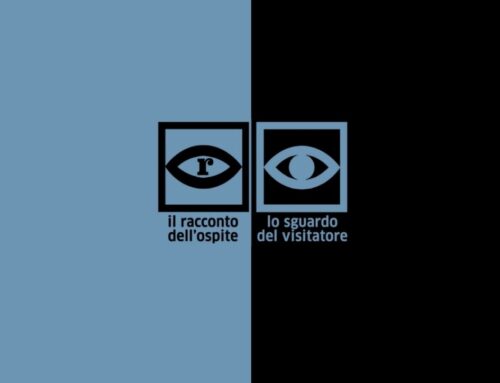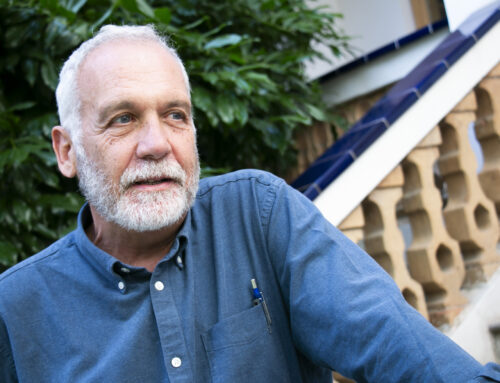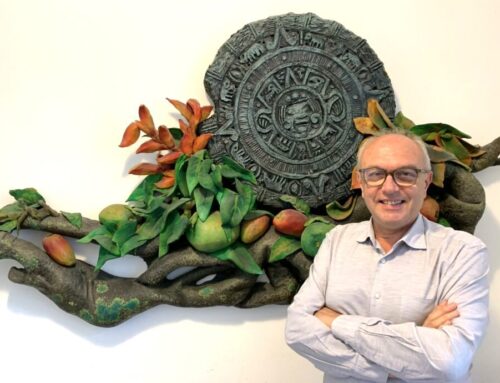Balanced and sustainable tourism must focus on the encounter between visitors and host communities, valuing cultural differences and fostering mutual dialogue.
Gianluca Cepollaro, head of the Territory, Landscape and Culture sector of the TSM (Trentino school of management) has since its inception directed Step, a school for territorial and landscape governance, the only Italian training institution on the subject extended to operators, officials and students.
Paolo Castelnovi, landscape architect and urban planner, is President of the Landscapefor Foundation, with offices in Turin and Genoa.
(Clicking here you can watch and listen to a video interview with Gianluca Cepollaro)
—
The prospects of a different way of doing tourism, linked to experience, are often betrayed by a superficial and solipsistic conception of experience, without the capacity for dialogue and listening to others, and without curious attention to differences and specificities. Where these remain, there are antibodies to curb overtourism and the consumption of primary resources.
—
Paolo Castelnovi
The theme concerns the aspects that we can use of a new tourism modality and related communication to develop a model of balanced use of the resources of less urban territories and their communities, which are often in irreversible decline. We must take into account the risks of aberrant dynamics, such as overtourism, or the fragilities of nascent processes, such as the interest of the new generations in direct ways of knowledge, not mediated by systematic apparatuses, in continuity with individual experience and perception.
We would like your contribution to analyse the topic, to raise the most decisive criticisms and, if anything, to
indicate good practices and experiments to consult.
—
Gianluca Cepollaro
Let us start with a framework of general considerations on the evolution of tourism and its relationship with local communities.
In my opinion, we are experiencing a period of transfiguration of the ideal references for interpreting the relationship between communities and tourism, which is driven by the great change in the very idea of experience (as already pointed out in your introductory document).
We used to think of tourism as a great metaphor of encounter, in which the host hosts the guest by evolving their relationship into the shared experience of the encounter itself. Today, when we proclaim the importance of experience in tourism, we have in fact lost the criterion of exploring the construct of experience, which has a depth and articulation of which today almost always only a parody is proposed.
Suffice it, to realise the depth of the theme, to look at the etymon of the word: ex – per – iri . There are at least three dimensions in the term: ex, which indicates provenance, belonging and to some extent induces the domination of identity, per, which indicates crossing, exploration, contact and convergence, and then iri, which opens up to research, to what has not yet happened, to the ability to take account of the future.
The complexity of the term, despite the rhetoric of experiential tourism, is no longer taken into account and everything is reduced to a sort of mime of activities, generating superficial emotions
superficial, as if surfing on the deep wave of real experience, encounter, knowledge and storytelling. It used to be a way of relating between guests that made conversation the core of the tourism phenomenon, with its rhetoric and fascinations. Now we have almost completely lost this dimension of the encounter and the equal and operative experience that ensued for both guest positions. We have deepened the separations between guest, reduced to a role of pure service, and host, induced to planned actions, without waste and creative space.
A new tourism dimension that is culturally ‘useful’ to both visitor and inhabitant must necessarily rely on a shared experiential process that keeps the encounter between diversities at the centre. The problem is measured by the change in the very idea of community, still based on the idea of a visitor arriving and a community welcoming him/her. Today, relations have changed on a structural level, mainly because the host community is no longer recognisable, homogeneous and no longer has a unitary image of itself.
The community’s perception of itself is the key to a correct approach to tourism, especially in the face of a growing and increasingly ambiguous and heterogeneous tourism, although work will also have to be done on the excessively homogenising demand.
In any case, communities react differently to tourism pressure and this sets the relative ‘sanity’ of the report, which is too often generic and inattentive to local specificities.
A rigid, defensive representation of one’s identity, crossed with fashionable, homologated services, is perhaps the strategically worst offer, which quickly leads to the uprooting of both the host community and the guest, where the metaphor of reference is not encounter but indifference, a suspension of the empathy of the encounter, and everything becomes a pure service without co-evolutionary relations between the parties.
In this sense, the idea of the confusion between the parties is useful, where one realises the positivity of knowledge flows between guests and hosts and encourages them without a predefined supply and demand role play.
In this perspective, the need to guard mountain territories leads to the growth of a new type of local community, in which visitors and residents are both called upon to a common responsibility
common responsibility that over time, in the best cases, leads to virtuous behaviour, even to the self-limitation of overtourism. This is a behaviour that to some extent is taking place in the Dolomites, with dynamics of collaboration, integrated storytelling, and sometimes conflict between locals and outsiders, which in any case involves an interest in local heritage and counteracts the danger of indifference and homologation.
Promoting tourism as a model for cultural integration #1 | P. Castelnovi and G. Cepollaro
—
The presence of culturally aware behaviour and a tradition of parity between host and guest is a laboratory for experimenting with a new mode of tourism, where storytelling and memory acquire a value that today, in the digital transition, is in danger of being lost.
—
Paolo Castelnovi
In the trend of structural change that you have outlined, it is interesting to see how real situations seem to be developing, in that state of transition in which contradictory situations are coexisting and there is a lack of reference models of cultural and political management that encourage good practices and limit the damage of bad ones, which we have let grow without attention and without control (in Catalonia it seems that the issue of overtourism is perceived as a threat as much as and more than immigration).
In fact, I believe that in many places we are in a situation of statu nascenti, in which germinal
germinal dynamics, precious but fragile, which we should grasp in time and understand how to cure over time, making them the engine of new communities, in Trentino and beyond.
—
Gianluca Cepollaro
I believe that in the Trentino area there is a growing awareness of the risks that this model of tourism development entails, beyond (or precisely because of) the quantitative successes that see the area grow steadily in the number of satisfied visitors.
Even among strategic operators, such as Trentino marketing, there is a realisation of the risk of initiating fast growing processes with great inertia, which are difficult to stop at the threshold of sustainability,
while cultural reflection and its widespread application, the only one capable of metabolising and making such processes governable, takes a long time. It is a difficult problem to solve, because culturally aware behaviour seems to be the only levee against the disaster of overtourism, but cultural maturation times make its application difficult in the face of
in the face of rapid and devastating phenomena such as the airb&b and pizza economy.
Tourism remains a major driving force for the development of mountain territories, but it is now realised that it is not the only one, and other aspects of the local economy are also being addressed.
In this sense, I believe that good practices are interesting if, however, they are supported by broad constructions of thought and networks of general elaboration. For example, on the theme of storytelling, which you highlighted in the opening document, we are developing an interesting project, which concerns the theme of territory and general living beyond tourism.
A chef of great cultural level, capable of reasoning on the whole arc that goes from the quality of food to that of the territory, has been narrating his professionalism for some years now in an engaging way; I would like the tale of personalities of this kind to go beyond the socio-economic space of work, of production, and expand to the tale of the other aspects and values of mountain life, of leisure time, of social behaviour, of founding desires.
It is this quality of life that becomes the object of research, that perhaps contains the values that also interest the new visitor, halfway between new inhabitant and fascinated anthropologist.
One becomes a good guest of the new generation if one is able to live in those ways and behaviours. Not only that, but these aspects must be part of the narrative that fascinates the tourist, who then brings back the quality of life that allows one to be a good guest. It is no longer just about a product or an emotion dedicated to the tourist for him to experience, but about an integrated and motivated behavioural model that the city now only rarely allows. What interests the conscious tourist
It is behind the services and products of the territory, it is the territory itself, and on the other hand enhancing the back stage brings to the fore the risk that the quality of life deteriorates drastically for those who provide services to the tourist, losing the allure of guest and becoming a mere servant, deprived of the qualities of life that others then rob from him.
Click here to watch and listen to this part of the dialogue on video.
Promoting tourism as a model for cultural integration #2 | P. Castelnovi and G. Cepollaro
—
There are barriers to be overcome, both for the visitor, who can no longer be satisfied with the false offer of mass-produced ‘ladies’ services’, but also in the organisation of the sector, in making jobs attractive again, in improving the willingness to meet and tell stories.
—
Paolo Castelnovi
We are at the heart of the topic. The possibility of comparing very different situations helps. The situation in Trentino, with its rather strong communities and careful defence against the risks of overtourism, does not save them from critical pressure, but in any case puts them in a position of awareness and search for solutions, which could be taken as a model in other situations much less equipped in this perspective, and with less cohesive or very weakened local communities, as in the rest of the Italian Alps for example. On the other hand, the pressure is very high and perverse: one suspects that the demand you call indifferent (to places) is a demand for pure servitude.
Regardless of where it takes place. One wants to feel like a gentleman for a few days, and one has as models the baths, massages and body cures of the Middle East dreamt of in the 1700s and represented today by the various Doha and Abu Dabhi, new Las Vegas (lacking perhaps only an adequate side for female pleasure, which in the West constitutes a very significant share of the demand). This is the main stream, when Minister Santanchè says that the Tuscan Riviera lacks 15,000 tourism workers, she is saying that 15,000 servants are missing (which is why she may not find them, at least Italians).
In this cohesive cultural dimension, tourist demand is paradoxically less and less
linked to the specificities of the places to be explored, and more and more to the facilities to be enjoyed.
services, often standardised and enjoyed in special non-places (a school example of this are the spas with which every respectable hotel has equipped itself).
If in Trentino, more easily than in other areas, this demand is in fact metabolised into a very rich and specific set of services, valley by valley, mainly provided by local inhabitants (new or old, we will see), your recommendation is concretely
practicable: there is a person who can tell his or her life story, a solution must be found for the territories where this community no longer exists, and the tourism workers are ‘mercenaries’, often from the city and who return to the city at the end of the season. For them the story would be very interesting, but it certainly has nothing to do with the uplifting drive for exploration mentioned earlier.
At the same time as this dynamic of momentary subjugation of non-urban territories by citizens, there are those who seek alternative physical and cultural spaces to the city, in order to live better, and find, perhaps for short periods, places, often with little in the way of a strong host community, but willing to be inhabited at very low cost and to ‘slowly release’ their charms.
For these new inhabitants, tourism can be a resource, mostly individual, without a
collective integration that makes a choral narrative possible. So it will probably generate a way of doing things, a ‘style’ with offers different from the traditional local ones, which we expect.
—
Gianluca Cepollaro
This reasoning leads me to three reflections: on tourism as a service, then on the communities that are being rebuilt, and finally on the skills needed.
For the first point, if we want to give space to the full complexity of the phenomenon, we cannot schematise by putting the lords on one side and the servants on the other. If anything, we must describe the situation as being acted out by servants on both sides. The tourism of indifference is made not by lords but by servants: it is not a servant who queues on the motorway, at the cash machine, at the crowded enjoyment of monuments or places that would demand recollection. Indifference breeds servants, because it nullifies the fruitfulness, the pleasure that arises from the relationship with something else one is curious about.
Obviously there is no other key but the cultural one to come out of this.
The second aspect is that of the local community. We have already shared the metaphor of the broken vase fixed in the Zen mode, which takes a new shape and is perceived differently. Herein lies the central problem, because we persist in thinking of the new as a reconstruction of the old and are not attentive to the different performance that a situation of change such as the present one demands of us. We need an imaginative effort to recompose the existing in a new way.
The third point, that of skills. In my generation, work in tourism had great appeal, whereas today it no longer attracts so much. Partly this is due to the general rejection of work for others, which loses its meaning for the younger generation, and partly it is due to the organisation of the sector, which has been organised in a Fordist manner, with times and conditions that are now often considered unbearable or endured unwillingly (and therefore without those added values whose presence we called for earlier).
This should be a signal to reorganise the sector. It is a complex issue, which must be addressed on a place-by-place basis, but which must be recovered together with the theme of passion for travel and curiosity on the part of demand.
Click here to watch and listen to this part of the dialogue on video.
Promoting tourism as a model for cultural integration #3 | P. Castelnovi and G. Cepollaro
—
The theme of storytelling, and more generally of dialogue between host and guest, needs to be explored in depth: the right perspective is to achieve cultural mediation between different cognitive and affective systems, capable of arousing curiosity and respect for each other. This is a skill that must be regained, after the spontaneous one produced by strong and lively local communities has been lost
—
Paolo Castelnovi
Proviamo a fare un approfondimento sul versante degli strumenti, e tra questi il racconto e la capacità di autorappresentazione. Da una parte quello del racconto è un problema di consapevolezza di sé, dall’altra il racconto è affascinante se è corale e diventa una delle caratteristiche del luogo e non solo del testimone.
Questo conta anche per chi pensa alle strategie formative: quella del racconto dovrebbe essere una delle competenze di base e non di quelle specializzate, superando definitivamente la logica
della guida connessa a un luogo, ma piuttosto aprendo a una diffusa capacità di raccontare il proprio pezzetto come una tessera di un puzzle-romanzo.
Lo stesso si richiede come capacità di ascolto per il visitatore…anche qui si dovrebbe essere capaci di un’educazione che sviluppi e non reprima una disponibilità spontanea alla curiosità e allo stupore che si ha da bambini. E’ una sorta di competenza che vale per chi racconta ad altri il proprio territorio, sia per chi ascolta, da visitatore, e fa proprie le storie raccontate unendole alle emozioni che direttamente derivano dall’esperienza del territorio attraverso il paesaggio.
Ci sono esperienze promettenti (oltre Castiglioni e il suo bel lavoro sulla didattica del paesaggio nelle scuole primarie)?
—
Gianluca Cepollaro
We today (both as Step and as the Mountain Academy) try to train people who do not point fingers at things, but who try to mediate between two different styles of thinking. In this sense, the focus is on landscape, which is precisely the area of cultural mediation.
We do not learn new landscapes unless we ‘understand’ them in those we already know.
An example: in the summer, I have lived for decades at the foot of Monte Bulgheria (in Scario, a village on the Cilento coast). I had to come to Trentino and slowly understand the meaning of the ‘mountain’ in order to find the desire to go there and appreciate it: previously it was not present in my imagination and I did not even perceive it. We know through our mother tongue and initial affective and cognitive experiences, everything else has to be mediated with respect to those. Everyone you meet and somehow listen to can help in mediation. With Step, we have worked a lot on the less scientific and more ‘political’ aspects of the landscape that are very important for ‘affective’ knowledge and cultural tourism mediation.
We are at a fundamental junction of the teaching and learning processes, which must avoid any instructive logic. One has education where one has a closed, static and defensive idea of knowledge, which is delivered as a denotation: one merely instructs on command, without considering the emotional and affective dimension, which are always present, and one neglects the capacity to sustain the listener’s curiosity (which in fact is the capacity of care that must be activated in the operation of communicating knowledge, by taking interest, not saying the superfluous, keeping attention high). Measured in this way, the contribution of the traditional guide (even with digital technologies) is often 90% superfluous and the remaining 10% is delivered in a way that is quickly forgotten. We are already among the services of indifference tourism.
Click here to watch and listen to this part of the dialogue on video.
Promoting tourism as a model for cultural integration #4 | P. Castelnovi and G. Cepollaro
—
Cultural mediation services with the visitor are part of the well-deserving family of ‘caring’ activities, appropriate, proportionate, attentive to the specificities of the context and of the other. The theme of declining tourism services in this sense is perhaps the most important one for tourism qualification strategies even in ‘advanced’ realities such as Trentino
—
Paolo Castelnovi
The equation of services for the new tourism = services to take care seems to me strong and interesting, which must be declined, because the effects must also be taken into account in this phase, in which queuing at the airport and for the audio guide in the museum is still experienced as a right, the result of a choice, like religious pilgrimages. In the chaos of this transitional phase of the way of inhabiting all forms of tourism, even the worst coexist in the illusory sphere of services to which one is entitled.
It is probably necessary to differentiate, to highlight differences: it is a time when the Gambinian motto
Gambinian motto ‘unify wherever possible, differentiate where necessary’ imposes a difficult task of differentiation, both in services and in demand, otherwise our efforts will be drowned in the general whirlpool.
I still think that spreading good practices is good groundwork for building a visibility of this different way of living and visiting. In this sense, Trentino is considered by many to be a model (indeed, the opportunistic ‘eh tanto loro sono bravissimi da decenni e quindi sono inimitabili…’ is already coming forward. You have to be able to tell it as a choral political and cultural affair, but articulated and acted out in a thousand different ways in many local experiences.
Gianluca Cepollaro
I agree wholeheartedly. Bear in mind that we are experiencing a period of euphoria, in which all analyses of complexity have been removed and successes are being sold that should be analysed with a critical sense, the one necessary to be able to evolve. In Trentino, too, there are the driving forces that agitate other territories, such as depopulation, which has certainly been contained so far, but will nevertheless hit hard and impose significant changes, which we must be able to look at in time without deluding ourselves that we have sufficient palliatives as things stand.
We are working in this sense with the school, working on the role that culture can play in this phase with regard to young people, thinking about new ways of cultural involvement and maximum openness to the unexpected, given that we are in a period of robust and partly unforeseen change.
Click here to watch and listen to this part of the dialogue on video.
Promoting tourism as a model for cultural integration #5 | P. Castelnovi and G. Cepollaro
—
The adoption of ways of working that are geared towards caring for the context and interlocutors is fundamental not only for those working in tourism but also for all other types of tertiary work, and is probably the strategic perspective with which to stem the flight from work of younger people.
—
Paolo Castelnovi
Closing on youth, do you think those prospects of new services for tourism are interesting for the younger generation?
Gianluca Cepollaro
This does not only apply to tourism, it applies to the entire labour supply. The rejection of ordinary work by young people lays the foundations for a radical change in the labour supply, which probably, suitably reorganised, can provide a great incentive for processes of territorial balance.
It is a change that not only involves effects on the labour system, but also, as you wrote, on territorial processes, on the way of consuming and living. It is an opportunity we cannot miss.
—
Click here to watch and listen to this part of the dialogue on video.



